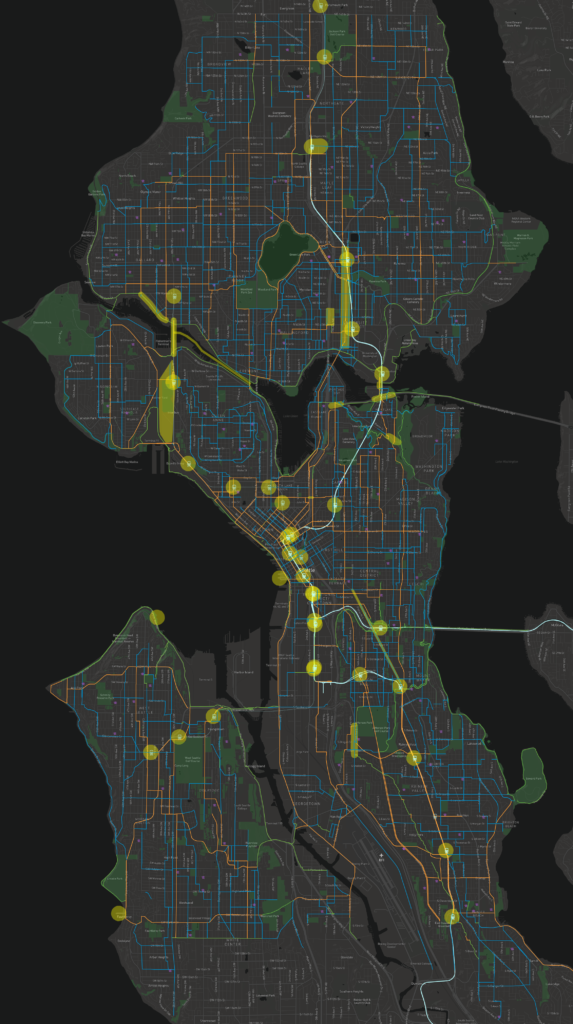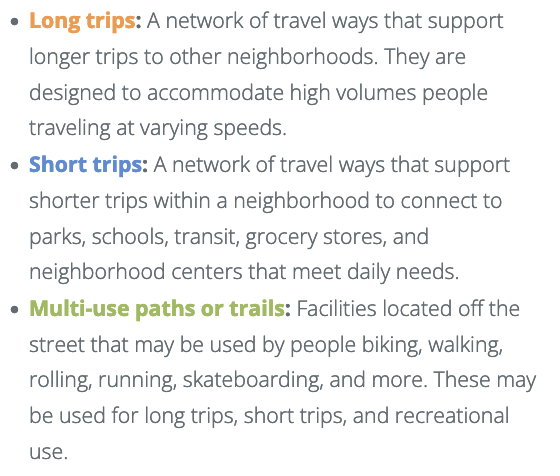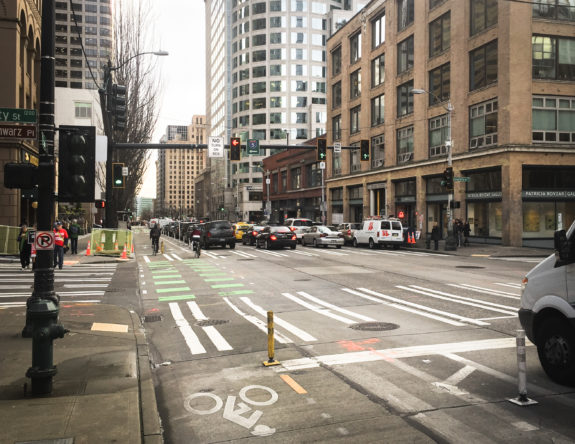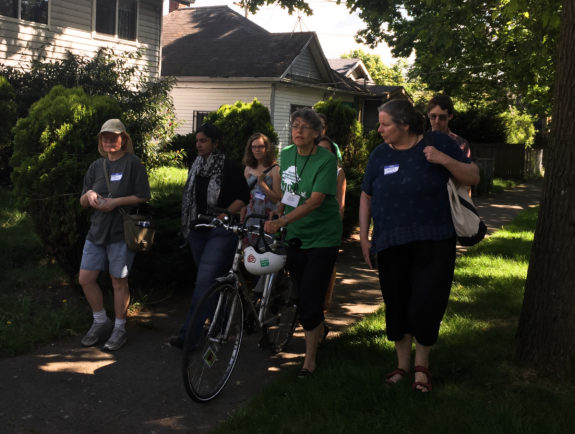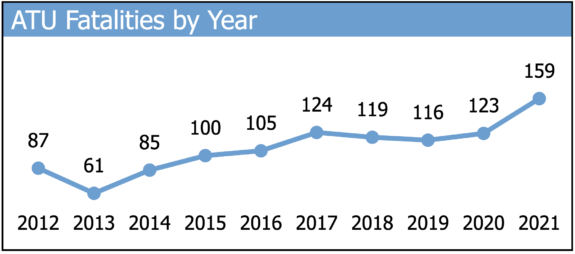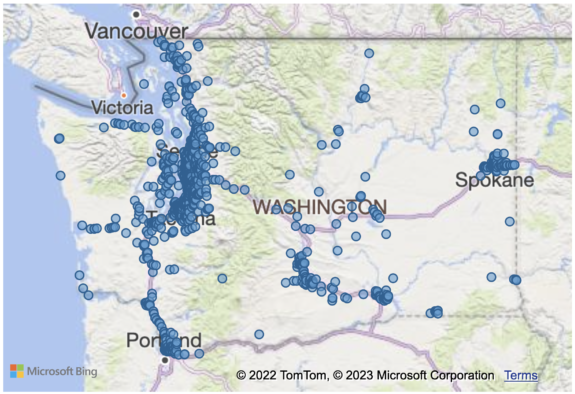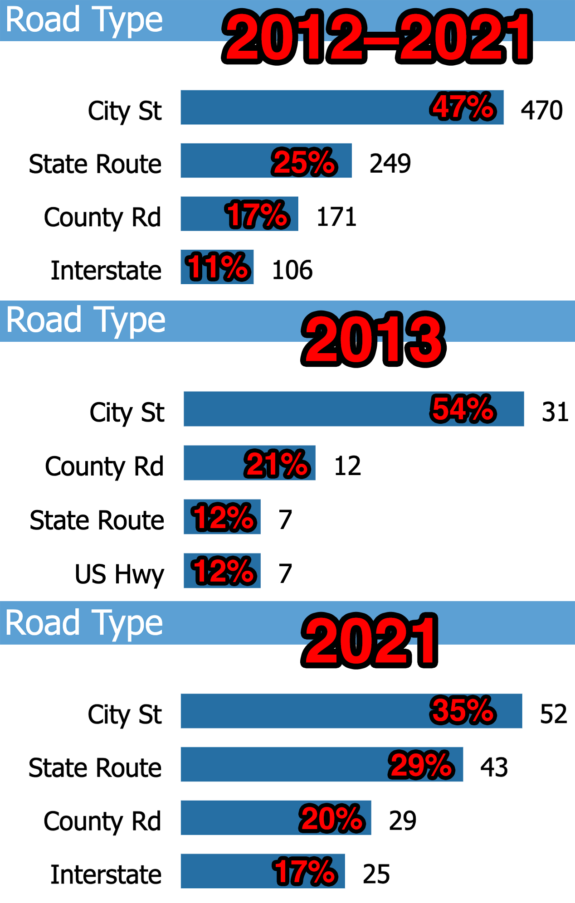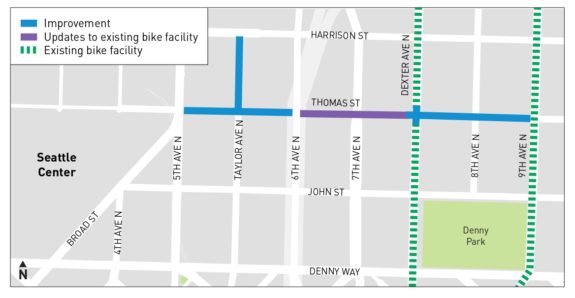
Jaahnavi Kandula—a 23-year-old student from Adoni in the Andhra Pradesh state in India who was studying at the South Lake Union campus of Northeastern University—was walking across Dexter at Thomas Street in a marked crosswalk when a police officer driving an SPD SUV struck and killed her shortly after 8 p.m. Monday evening.
Our condolences to her friends and family.
A GoFundMe set up to support Kandula’s family had raised more than $140,000 at the time of publication.
Seattle Critical Mass announced via Instagram that their Friday ride will head to Dexter and Thomas to hold a vigil for Kandula. Riders will meet 6:30 p.m. in Westlake Park. People can also go directly to the fatal location to wait for riders to arrive. More details from Seattle Critical Mass:
This Friday, January 27th 2023, we are going to hold a moment of silence and vigil for Jaahnavi Kandula at Dexter Ave North and Thomas Street. A 23 year old community member who was killed after being hit by a police officer in a speeding squad car. It has finally come out that Kandula was crossing from east to west in the crosswalk when she was hit!
MEET AT WESTLAKE PARK 6:30pm
🤍🤍🤍🤍🤍🤍🤍🤍🤍🤍
Sadly this isn’t the first vigil we’ve held. It really hurts that Critical Mass knows all the steps to put these on. That means so many of our friends and family have passed on Seattle Streets.
🤍🤍🤍🤍🤍🤍🤍🤍🤍🤍
Like always, emotions are high!
Let them show through your voices! Be honest with yourself and look out for one another. Critical Mass is a safe place to express yourself. With that said, violence of any kind will not be tolerated.
🤍🤍🤍🤍🤍🤍🤍🤍🤍🤍
TAKE THE LANE
TAKE CARE OF EACH OTHER
SHUT IT DOWN
🤍🤍🤍🤍🤍🤍🤍🤍🤍🤍
Details from police about what exactly happened have been limited. The post on the SPD Blotter noted only that the officer was driving northbound on Dexter in a marked patrol vehicle when he struck Kandula as she walked westbound in the crosswalk. The Traffic Collision Investigation Squad reports often take a while before they are released. This incident is likely to get extra public interest since a police officer was behind the wheel, which means TCIS will be investigating the actions of a fellow officer. You can listen the police radio recordings from the incident online (overdose call starts at 8:00 PM, and the first mention of the collision comes at 8:05 PM), though there are not many more details in the audio.
Dexter/Thomas has a sad and frustrating history
This will unfortunately not be the first memorial for someone killed in traffic at Dexter and Thomas. Mike Wang died there while biking home from work in July 2011 when Erlin Garcia-Reyes struck him with an SUV and then fled the scene. Along with Adonia Lugo and Davey Oil, I helped organize a memorial ride in 2011 that included Dexter and Thomas. It was an experience that changed my life by forcing me to come to terms with the scale of the heartache and pain traffic violence causes for entire communities of people every time someone is lost.
Dexter has since been significantly redesigned, with SDOT adding protected bike lanes and attempting to reduce the effective width of a very wide street that was once envisioned as the grand boulevard into a new civic center that the city never built. With the opening of the new SR-99 tunnel in 2019, Thomas Street was reconnected and became a major walking and biking route between South Lake Union and Seattle Center. With the urging of then-Councilmember Sally Bagshaw, neighbors and SDOT drew up plans to improve the walking and biking environment on this new street as part of the Thomas Street Redefined project. The project website still lists the “interim schedule” for the planned “Dexter/Thomas Protected Intersection” as slated for completion in early 2021, but the project was delayed under Mayor Jenny Durkan as the pandemic understandably threw many city projects off their pre-pandemic timelines. Mayor Durkan tried to cut the project’s funding in the 2021 city budget, but advocates fought the cut and the City Council voted to restore its funding. The city then tried to divert the Thomas Street funding to pay for the Stay Healthy Street program, but the Bicycle and Pedestrian Advisory Boards pushed back to protect the project. The project was never prioritized, however, and as Publicola reported, Mayor Bruce Harrell cut $2.2 million from its funding in his 2023 budget. This time, the City Council did not restore it. The most recent update on the east segment, which includes a traffic light at Dexter, was posted in February 2022. Its “target project schedule” would have had Thomas Street under construction starting in 2022 and extending through 2023.
It should not be this difficult for the people of Seattle to convince the city to invest in safer streets. Organizing over and over to try to save the same short safety project is exhausting. We have known for a decade that Thomas Street would become a primary walking and biking route once the old highway trench leading to the defunct Battery Street tunnel was filled in. I first wrote about what was then called the “Thomas Green Street” 12 years ago, writing, “We need a street from South Lake Union to Seattle Center and Queen Anne that, at its core, exists at a walking and biking pace.” At the time, there was no funding to build the concept, but the idea was to have the redesign in place by the time the streets were reconnected. That didn’t happen, and now it is once again unfunded. Neighbors and safe streets advocates will surely organize once again to try to convince city leaders to make Thomas Street the safe and inviting walking and biking route it should already be, but this time they will do so with broken hearts.

